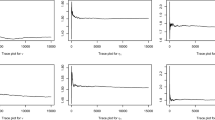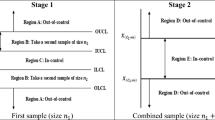Abstract
Major accidents are low-frequency, high-consequence accidents which are not well supported by conventional statistical methods due to the scarcity of directly relevant data. Modeling and decomposition techniques such as event tree have been proved as robust alternatives as they facilitate incorporation of partially relevant near accident data–accident precursor data—in probability estimation and risk analysis of major accidents. In this study, we developed a methodology based on event tree and hierarchical Bayesian analysis to establish informative distributions for offshore blowouts using data of near accidents, such as kicks, leaks, and failure of blowout preventers collected from a variety of offshore drilling rigs. These informative distributions can be used as predictive tools to estimate relevant failure probabilities in the future. Further, having a set of near accident data of a drilling rig of interest, the informative distributions can be updated to render case-specific posterior distributions which are of great importance in quantitative risk analysis. To cope with uncertainties, we implemented the methodology in a Markov Chain Monte Carlo framework and applied it to risk assessment of offshore blowouts in the Gulf of Mexico.






Similar content being viewed by others
References
Apostolakis G (1982) Data analysis in risk assessment. Nucl Eng Des 71:375–381
Bier VM, Mosleh A (1990) The analysis of accident precursors and near misses: implications for risk assessment and risk management. Reliab Eng Syst Saf 27:91–101
Bier VM, Yi W (1995) The performance of precursor-based estimators for rare event frequencies. Reliab Eng Syst Saf 50:241–251
Bier VM, Haimes YY, Lambert JH, Matalas NC, Zimmerman R (1999) A survey of approaches for assessing and managing the risk of extremes. Risk Anal 19:83–94
Bureau of Safety and Environmental Enforcement, U.S (BSEE) Incident Statistics and Summaries 1996–2012 ytd. http://www.bsee.gov/Inspection-and-Enforcement/Accidents-and-Incidents/Listing-and-Status-of-Accident-Investigations.aspx. Accessed on 25 Sept 2013
Burgherr P (2007) In-depth analysis of accidental oil spills from tankers in the context of global spill trends from all sources. J Hazard Mater 140:245–256
Carlin BP, Louis TA (1996) Bayes and empirical Bayes methods for data analysis. Chapman and Hall, London
Cooke RM, Goossens LHJ (1990) The accident sequence precursor methodology for the European post-Seveso era. Reliab Eng Syst Safty 27:117–130
Dillon RL, Tinsley CH (2008) How near-misses influence decision making under risk: a missed opportunity for learning. Manag Sci 54:1425–1440
Eckle P, Burgherr P (2013) Bayesian data analysis of severe fatal accident risk in the oil chain. Risk Anal 33:146–160
Goodwin P, Wright G (2010) The limits of forecasting methods in anticipating rare events. Technol Forecast Soc Change 77:355–368
Kalantarnia M, Khan F, Hawboldt K (2009) Dynamic risk assessment using failure assessment and Bayesian theory. J Loss Prev Process Ind 22:600–606
Kalantarnia M, Khan F, Hawboldt K (2010) Modelling of BP Texas City refinery accident using dynamic risk assessment approach. Process Saf Environ Prot 88:191–199
Kaplan S (1983) On a ‘two-stage’ Bayesian procedure for determining failure rates. IEEE Trans Power Appar Syst 102:195–262
Kelly DL, Smith CL (2009) Bayesian inference in probabilistic risk assessment—the current state of the art. Reliab Eng Syst Saf 94:628–643
Khakzad N, Khan F, Amyotte P (2011) Safety analysis in process facilities: comparison of fault tree and Bayesian network approaches. Reliab Eng Syst Saf 96:925–932
Khakzad N, Khan F, Amyotte P (2012) Dynamic risk analysis using bow-tie approach. Reliab Eng Syst Saf 104:36–44
Khakzad N, Khan F, Amyotte P (2013a) Dynamic safety analysis of process systems by mapping bow-tie into Bayesian network. Process Saf Environ Prot 91:46–53
Khakzad N, Khan F, Amyotte P (2013b) Quantitative risk analysis of offshore drilling operation: a Bayesian approach. Saf Sci 57:108–117
Khakzad N, Khan F, Paltrinieri N (2014) On the application of near accident data to risk analysis of major accidents. Reliab Eng Syst Saf 126:116–125
Kirchsteiger C (1997) Impact of accident precursors on risk estimates from accident databases. Loss Prev Process Ind 10:159–167
Lunn DJ, Spiegelhalter D, Thomas A, Best N (2009) The BUGS project: evaluation, critique and future directions (with discussion). Stat Med 28:3049–3082
Meel A, Seider WD (2006) Plant-specific dynamic failure assessment using Bayesian theory. Chem Eng Sci 61:7036–7056
OpenBUGS (2012) http//www.OpenBUGS.info. Accessed on 10 Oct 2012
Phimister JR, Oktem U, Kleindorfer PR, Kunreuther H (2003) Near-miss incident management in the chemical process industry. Risk Anal 23:445–459
Quigley J, Bedford T, Walls L (2007) Estimating rate of occurrence of rare events with empirical Bayes: a railway application. Reliab Eng Syst Saf 92:619–627
Rathnayaka S, Khan F, Amyotte P (2011) SHIPP methodology: predictive accident modeling approach. Part I: methodology and model description. Process Saf Environ Prot 89:151–164
Ronza A, Vilchez JA, Casal J (2007) Using transportation accident databases to investigate ignition and explosion probabilities of flammable spills. J Hazard Mater 146:106–123
Siu NO, Kelly DL (1998) Bayesian parameter estimation in probabilistic risk assessment. Reliab Eng Syst Saf 62:89–116
Skogdalen JE, Vinnem JE (2012a) Quantitative risk analysis of oil and gas drilling using Deepwater Horizon as case study. Reliab Eng Syst Saf 100:58–66
Skogdalen JE, Vinnem JE (2012b) Combining precursor incidents investigations and QRA in oil and gas industry. Reliab Eng Syst Saf 101:48–58
Smith CL, Borgonovo E (2007) Decision making during nuclear power plant incidents—a new approach to the evaluation of precursor events. Risk Anal 27:1027–1042
Yan Z, Haimes YY (2010) Cross-classified hierarchical Bayesian models for risk-based analysis of complex systems under sparse data. Reliab Eng Syst Saf 95:764–776
Yi W, Bier VM (1998) An application of copulas to accident precursor analysis. Manag Sci 44:257–270
Acknowledgments
The financial support provided by Natural Sciences and Engineering Research Council of Canada (NSERC) and Vale Research Chair Grant and the valuable comments from the editor in chief and anonymous reviewers are gratefully acknowledged.
Author information
Authors and Affiliations
Corresponding author
Rights and permissions
About this article
Cite this article
Khakzad, N., Khakzad, S. & Khan, F. Probabilistic risk assessment of major accidents: application to offshore blowouts in the Gulf of Mexico. Nat Hazards 74, 1759–1771 (2014). https://doi.org/10.1007/s11069-014-1271-8
Received:
Accepted:
Published:
Issue Date:
DOI: https://doi.org/10.1007/s11069-014-1271-8




